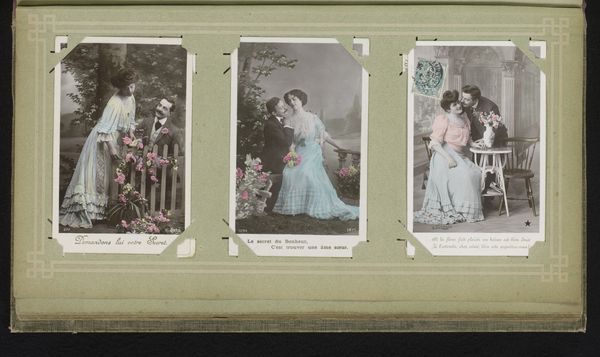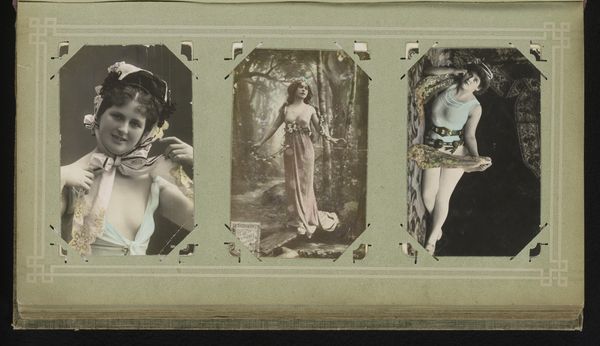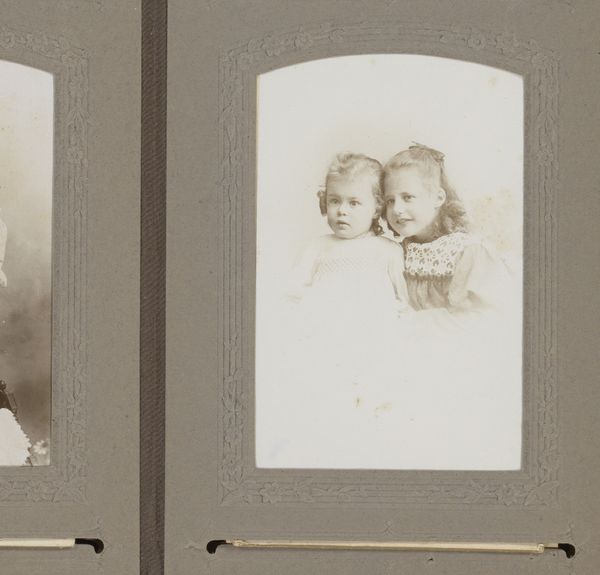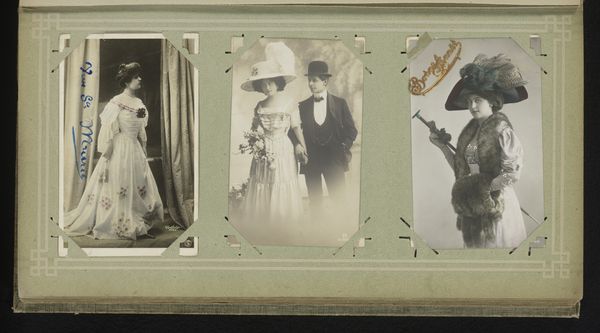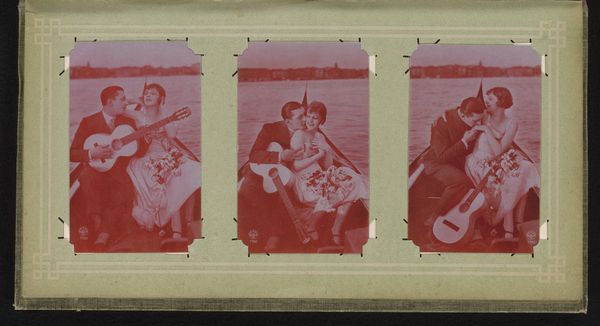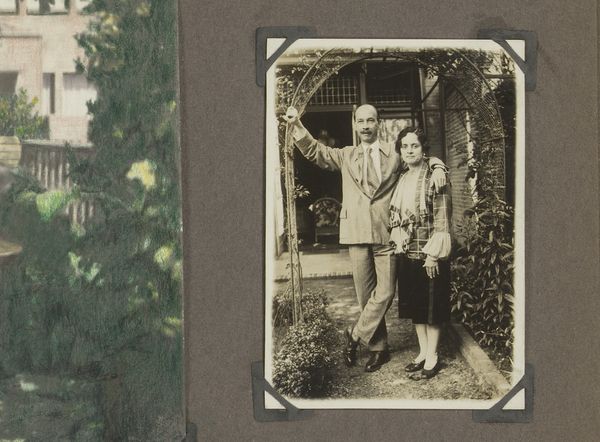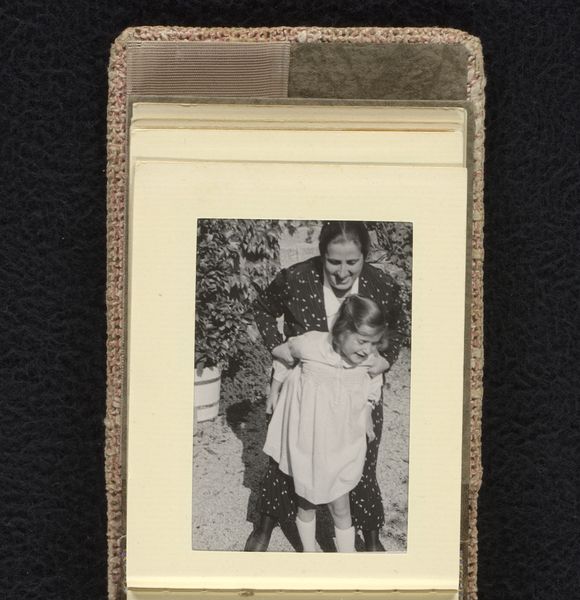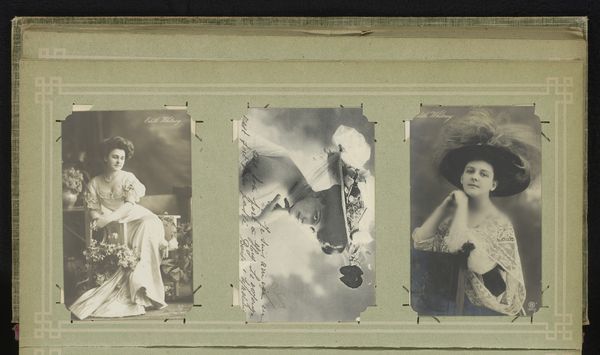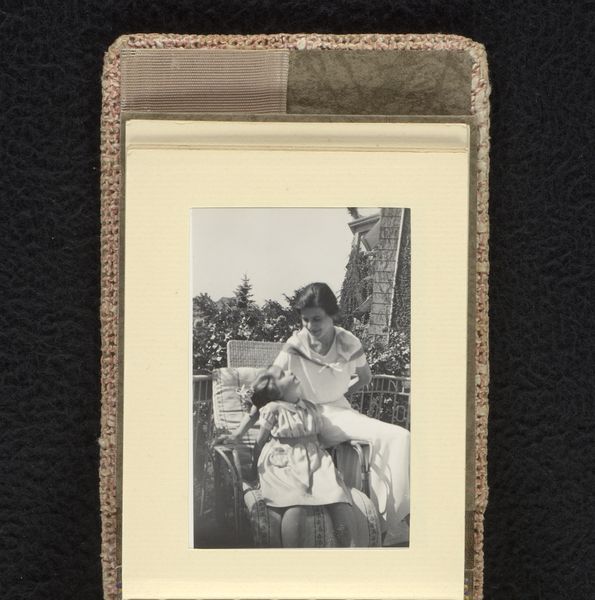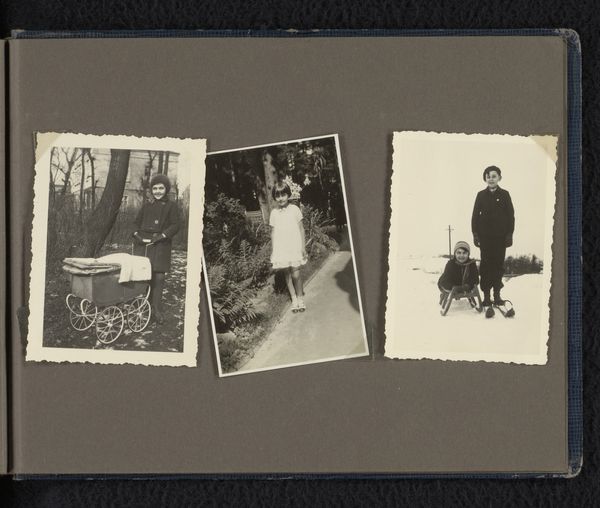
photography, albumen-print
#
photography
#
group-portraits
#
albumen-print
Dimensions: height 196 mm, width 368 mm
Copyright: Rijks Museum: Open Domain
Curator: This albumen print, attributed to Rotary Photo and titled "Three Portraits of a Girl", appears to have been made sometime between 1900 and 1930. The image shows what looks like an album page featuring portraits of a young girl, perhaps across different stages of her childhood. Editor: My first thought is that there's a delicate melancholy at play here. The muted tones and the poses of the girl create an atmosphere of quiet introspection, particularly the left-most portrait of her sitting at a small table. Curator: Indeed. The triptych format itself encourages comparison. The framing and symmetry, alongside the consistent color palette, function as key formal devices. We have three distinct views—one posed indoors, the others potentially outside. The first in particular provides this rather structured still life with the lace-covered table contrasted by soft shadows around her form. Editor: Looking at them from a historical perspective, these studio portraits offered a way to preserve and memorialize an idealized version of childhood during this period. They catered to sentimental Victorian notions of youth and innocence, didn't they? Curator: Precisely. Consider the interplay of light and shadow in each image. The lighting seems diffused, avoiding any sharp contrasts. This creates a soft, almost ethereal quality. There is a sense of timelessness aided by limited focal range in many areas. Editor: The clothes also speak volumes about the conventions of the time. Clean white dresses, neat haircuts—it projects a very particular message about societal norms and family values of the upper-middle classes, almost propaganda in its constructed happiness. Curator: Observe how the composition in the central portrait shifts our focus with use of doubling. There are now two young children as we move out to what is possibly nature itself as she is framed along another, what that juxtaposition between staged solitude and shared experiences mean? Does the structure offer more narrative for childhood stages that contrast yet overlap, like this single art page? Editor: What stays with me most are the gazes. In each photograph, her eyes, though not always meeting the viewer, have a potent stillness. They’re like little windows into an era very focused on presenting a ‘correct’ face to the public. It's as much a performance as it is a portrait. Curator: The muted tones are a great aspect of these photos and prints - for me the tones almost speak of the sentimental act of looking at photographs later in time with added effects, as an act of reflecting on memory and image through composition. Editor: Absolutely. I now notice there's some inherent distance despite seeming intimacy - between viewer, child, and time itself through our understanding that we are viewing images designed around historical constructions and sentiments!
Comments
No comments
Be the first to comment and join the conversation on the ultimate creative platform.
